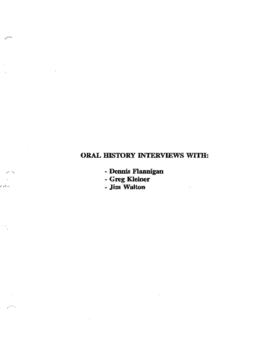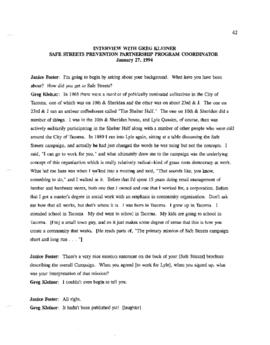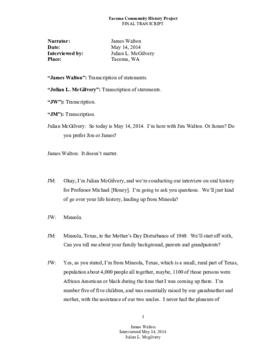Identity elements
Reference code
Name and location of repository
Level of description
File
Title
The Safe Streets Campaign: Tacoma and Pierce County Respond to Youth Violence
Date(s)
- 1994 (Creation)
Extent
Content and structure elements
Scope and content
Oral history interviews with Dennis Flannigan, Greg Kleiner, and James L. Walton by Janice M. Foster conducted January-Febrary 1994. Pierce County Councilman Dennis Flannigan, Safe Streets program coordinator Greg Kleiner, and Deputy City Manager Jim Walton talk about their involvement with Tacomas Safe Streets Campaign. Interviewees discuss the programs short-term and long-term goals and describe some of the difficulties in organizing grassroots movements.
System of arrangement
Conditions of access and use elements
Conditions governing access
Technical access
Conditions governing reproduction
Individuals may use project materials for scholarly or research purposes, according to the provisions of fair use, but reproducing, publishing, or broadcasting any oral history project materials requires permission. No use beyond limited quotation for educational and research purposes should be made of these interviews and other materials without obtaining written permission. For more information, contact the University of Washington Tacoma Library.
Languages of the material
Scripts of the material
Language and script notes
Finding aids
Acquisition and appraisal elements
Custodial history
Immediate source of acquisition
Appraisal, destruction and scheduling information
Accruals
Existence and location of originals
This oral history is a part of the University of Washington Tacoma Community History Project. To access additional content related to this interview, see the UWT Digital Collections.



